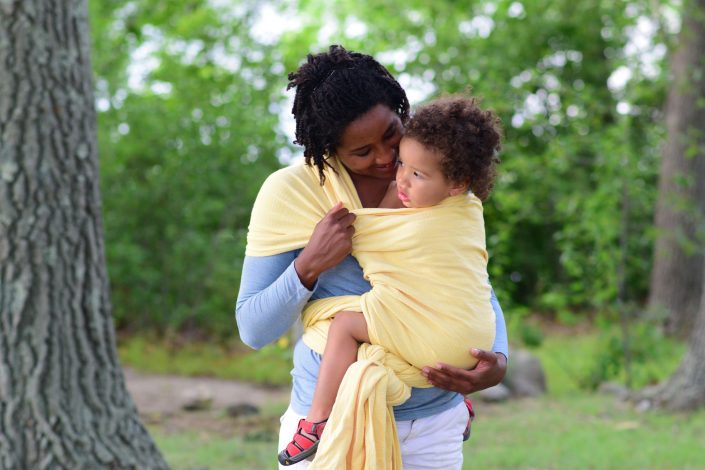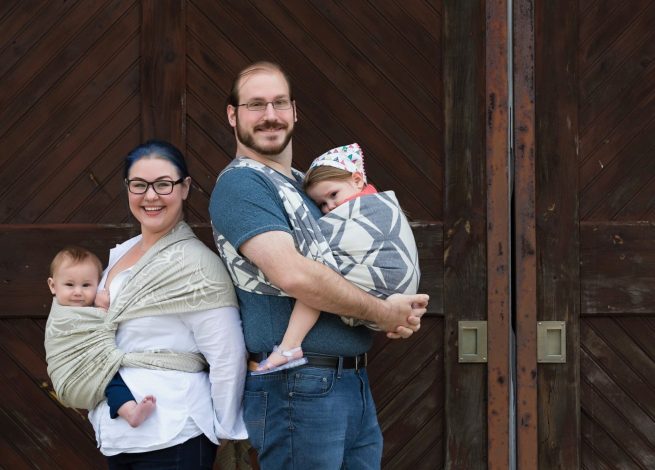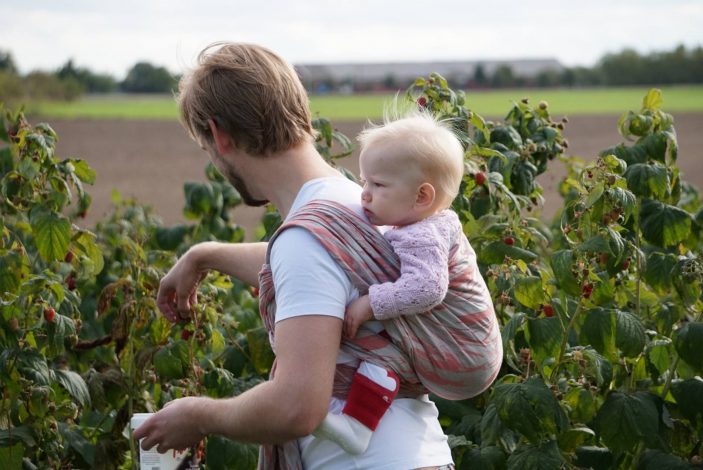How to prevent clogged ducts on trail
Clogged ducts is a phrase no breastfeeding parent wants to hear – especially when it becomes a chronic issue. It can put a damper on your outdoor adventures if not cared for properly. Complete and regular removal of milk is the best solution, and there are other steps you can take on the trail.
First and foremost, learn the signs of mastitis and take them seriously. It is a common condition that can be easily treated if caught early. Without proper care, it can lead to an abscess and other complications that can result in hospitalization and emergency surgery. Talk to a lactation consultant if your clogged ducts are due to an oversupply. They can offer solutions to decrease or manage your supply properly.

 Coolest hip or front carry – This is another carry that can be shifted to the hip for a bigger baby or to the front to support a newborn. This carry is secured with a slip knot, which requires some practice to master, but will make adjusting baby for breastfeeding a breeze! Again, there's no fabric directly over your breasts to irritate your ducts.
Ruck back carry – Even though it is physically impossible to breastfeed a baby in a back carry, it is still a great option for duct health. In this carry, there is no fabric or baby on your chest, so there is no irritation or pressure on your breasts. And baby snuggled safely on your back will make it easier to wander down the trail. Just make sure you stop to feed baby as needed.
Coolest hip or front carry – This is another carry that can be shifted to the hip for a bigger baby or to the front to support a newborn. This carry is secured with a slip knot, which requires some practice to master, but will make adjusting baby for breastfeeding a breeze! Again, there's no fabric directly over your breasts to irritate your ducts.
Ruck back carry – Even though it is physically impossible to breastfeed a baby in a back carry, it is still a great option for duct health. In this carry, there is no fabric or baby on your chest, so there is no irritation or pressure on your breasts. And baby snuggled safely on your back will make it easier to wander down the trail. Just make sure you stop to feed baby as needed.
 And, there is always the option to have someone else carry baby. It can still be a happy hike, especially if you need a break while you heal from a clogged duct. That woven wrap will be waiting for you as soon as you feel better.
What are your remedies for mastitis on the trail or for everyday prevention? Please share with us in the comments below.
And, there is always the option to have someone else carry baby. It can still be a happy hike, especially if you need a break while you heal from a clogged duct. That woven wrap will be waiting for you as soon as you feel better.
What are your remedies for mastitis on the trail or for everyday prevention? Please share with us in the comments below.


How to prevent clogged ducts on trail
Below are some general tips for the trail to prevent or relieve mastitis.- Nurse or pump often. Just because you're on trail, doesn't mean you have to skip feedings or sessions.
- Ditch the underwire bra; this is a major culprit for repeated clogged ducts.
- Make sure your bra/clothes is not rubbing too much on your chest.
- Always keep baby in an upright and secure position, even while feeding.
- If you're carrying your baby in a wrap, make sure it's properly tightened. After feeding baby, always re-tighten the wrap and reposition baby close enough to kiss the top of their head easily.
- Carries with waist belts are a good option to bring weight off your chest.
- If your child is old enough and you feel comfortable trying, opt for a back carry when not feeding.
- Avoid torso passes that place the weight mainly on your upper torso.
- Avoid shoulder passes/straps that go directly over your breasts.
- Opt for a stroller or have someone else wear if you are too uncomfortable.
How to wear a wrap for comfort
Picking a woven wrap that is on the softer, cushier side could reduce the chance of fabric irritating against your breasts. Bijou Wear is a baby carrier brand known for their supportive and newborn- to toddler-friendly woven wraps. You can choose from a variety of materials, colors and patterns to find the perfect wrap for your needs. Here are some options for woven wrap carries that can help reduce irritating a clogged duct: Front wrap cross carry – This beginner carry is both easy to master and is supportive for babies of all ages. It can be easily adjusted to nurse baby – even while walking on the trail. There are no straps or passes directly over your breast – just your baby. And baby has easy access to nurse on demand to clear out any clogs. This carry is the best utilitarian option to keep ducts healthy. Poppins hip or front carry – Don’t let this fancy-looking carry fool you; it is supportive and comfortable. It's a one-shoulder carry, but it can stand up to any hike as long as you take your time to tighten properly before you head out. It is traditionally done as a hip carry, which is a good option for an older baby who might be big enough to block your view in front. It can also be shifted to the front to support a smaller baby snuggled on your chest. Either option has no fabric directly over your breasts, so your baby has easy access to your breasts to nurse. Coolest hip or front carry – This is another carry that can be shifted to the hip for a bigger baby or to the front to support a newborn. This carry is secured with a slip knot, which requires some practice to master, but will make adjusting baby for breastfeeding a breeze! Again, there's no fabric directly over your breasts to irritate your ducts.
Ruck back carry – Even though it is physically impossible to breastfeed a baby in a back carry, it is still a great option for duct health. In this carry, there is no fabric or baby on your chest, so there is no irritation or pressure on your breasts. And baby snuggled safely on your back will make it easier to wander down the trail. Just make sure you stop to feed baby as needed.
Coolest hip or front carry – This is another carry that can be shifted to the hip for a bigger baby or to the front to support a newborn. This carry is secured with a slip knot, which requires some practice to master, but will make adjusting baby for breastfeeding a breeze! Again, there's no fabric directly over your breasts to irritate your ducts.
Ruck back carry – Even though it is physically impossible to breastfeed a baby in a back carry, it is still a great option for duct health. In this carry, there is no fabric or baby on your chest, so there is no irritation or pressure on your breasts. And baby snuggled safely on your back will make it easier to wander down the trail. Just make sure you stop to feed baby as needed.
 And, there is always the option to have someone else carry baby. It can still be a happy hike, especially if you need a break while you heal from a clogged duct. That woven wrap will be waiting for you as soon as you feel better.
What are your remedies for mastitis on the trail or for everyday prevention? Please share with us in the comments below.
And, there is always the option to have someone else carry baby. It can still be a happy hike, especially if you need a break while you heal from a clogged duct. That woven wrap will be waiting for you as soon as you feel better.
What are your remedies for mastitis on the trail or for everyday prevention? Please share with us in the comments below.
Read more:
This post is sponsored by Bijou. Photos courtesy of Bijou; featured photo by Arika Bauer.
Related Content




Comments